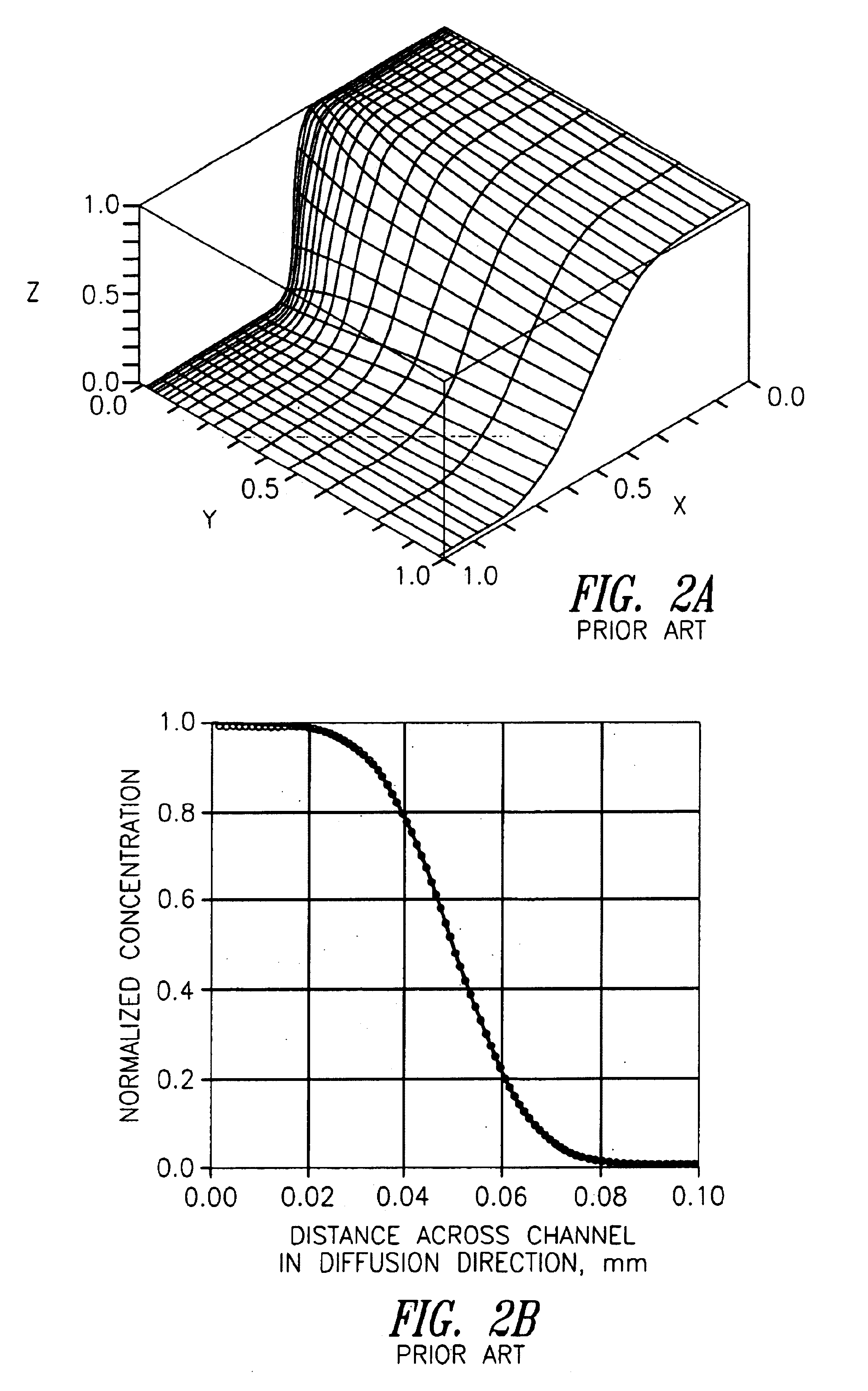Microfluidic devices for rotational manipulation of the fluidic interface between multiple flow streams
a technology of fluidic interface and microfluidic device, which is applied in the direction of flow mixer, fluid speed measurement, optical light guide, etc., can solve the problems of not being able to achieve a low flow rate with a practical pumping system, several potentially prohibitive restrictions for increasing the time interval, and not being able to image in the x-direction (through the two streams and the interdiffusion region) without the use of more sophisticated equipment. , to achieve the effect o
- Summary
- Abstract
- Description
- Claims
- Application Information
AI Technical Summary
Benefits of technology
Problems solved by technology
Method used
Image
Examples
examples
[0092]Major applications for the enhanced interdiffusion induced by the device of this invention include:
[0093]High Molecular Weight Diffusion Immunoassay
[0094]The diffusion immunoassay (DIA) is a microfluidic assay that allows measurement of the concentration of antigen in a sample. The typical orientation is similar to that of FIG. 1. One fluid contains an antibody for the antigen of interest and the other fluid is the sample spiked with a fluorescent analog of the antigen. The competitive assay relies on interdiffusion of the two fluids and interpretation of the resulting concentration profiles. The DIA has been demonstrated on a small, quickly-diffusing molecule, phenytoin. In some cases, however, it is of interest to apply the DIA scheme to larger slower-diffusing molecules. One such molecule of interest is cardiac troponin I (cTnI), an analyte thought to be a marker of cardiac infarction.
[0095]A one-dimensional model was used to predict fluorescence intensity curves that could...
PUM
| Property | Measurement | Unit |
|---|---|---|
| Transparency | aaaaa | aaaaa |
Abstract
Description
Claims
Application Information
 Login to View More
Login to View More - R&D
- Intellectual Property
- Life Sciences
- Materials
- Tech Scout
- Unparalleled Data Quality
- Higher Quality Content
- 60% Fewer Hallucinations
Browse by: Latest US Patents, China's latest patents, Technical Efficacy Thesaurus, Application Domain, Technology Topic, Popular Technical Reports.
© 2025 PatSnap. All rights reserved.Legal|Privacy policy|Modern Slavery Act Transparency Statement|Sitemap|About US| Contact US: help@patsnap.com



